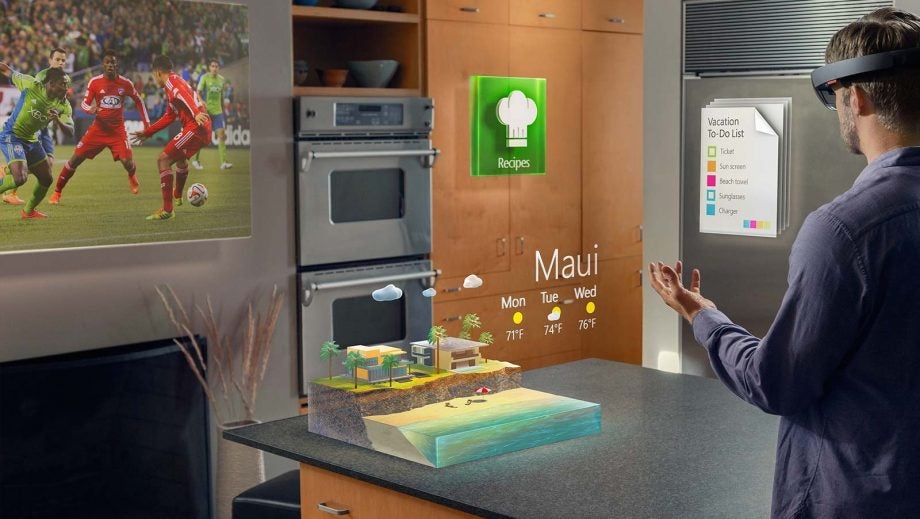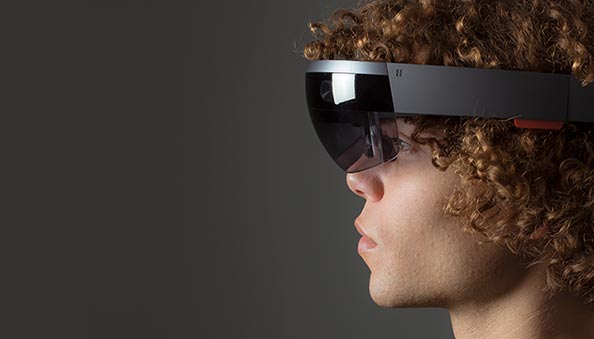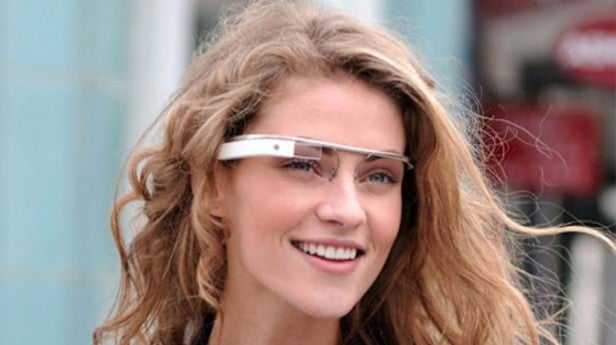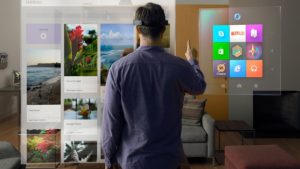Microsoft HoloLens vs Google Glass: Can you compare the AR headsets?

HoloLens vs Google Glass: Find out if Microsoft’s headset is really a rival for Google’s smart specs
Microsoft has announced HoloLens, an ambitious augmented reality headset, just days after Google scrapped its own initial effort in the field, Google Glass.
So how do these two bold devices compare?
They’re actually really very different.
Microsoft’s HoloLens is still at a relatively early stage of development, with only a handful of strictly guided demos and the resulting write-ups to go on. But it’s pretty clear already that it’s a vastly different proposition to Google Glass.
Significant differences in the design and function of these two bits of technology mean that some of the comparisons people are drawing between the two are a little lazy or even misguided. Here’s why.
Microsoft HoloLens vs Google Glass: Design
Google Glass was designed to be as unobtrusive as a pair of regular glasses. The idea was that you would be comfortable wearing the headset all day.
Microsoft HoloLens isn’t aiming for that at all. It’s a computer of sorts, designed to be used in a relatively fixed location for more intensive set tasks. It’s the laptop to Google Glass’s smartphone.
As such, HoloLens is a lot bulkier than Google Glass, sitting somewhere between Google’s lightweight effort and the Oculus Rift virtual reality headset – and if anything, closer to the latter. It involves a thick wrap-around headband with chunky fighter pilot goggles-like eye section.
When it comes down to basic aesthetics, if you felt self-conscious in a pair of Google Glass goggles, you’re likely to feel like a complete tool when you slip on Microsoft’s HoloLens headset.
But then, you won’t be talking to yourself while riding the Tube with the HoloLens.
The difference in the design of those eye sections is telling. Google Glass is designed to have a clear or prescription lens slotted in – your real world view is the most important factor here, with a small amount of light information layered on top when necessary.
Microsoft HoloLens, meanwhile, has a deeply tinted eyepiece, revealing that the detailed holographic worlds it creates are to be the centre of attention for however long you’re wearing it.
Read More: Hands on with HoloLens: What the pundits are saying about HoloLens

Microsoft HoloLens vs Google Glass: Function
Both of these devices are built around the same basic premise – an augmented reality headset that doesn’t cut you off from the real world like the aforementioned Oculus Rift and its ilk, but instead layers interface elements over your real-world view.
Both also harness voice recognition software to enable you to give instructions, while Microsoft HoloLens adds finger tap and head motion tracking inputs to the roster, granting way finer control. Google Glass has a simple touchpad for manually scrolling through a simple timeline-like interface.
Beyond superficial similarities, the forms of the two devices reflect their differing functionality.
Google Glass is all about simple daily tasks and notifications, the likes of which you might usually deal with on your smartphone – incoming messages, weather alerts, and the like.
Microsoft HoloLens, conversely, is about complex and immersive computing tasks, like having someone show you how to fix a light switch over Skype, playing an immersive table-top game (literally) of Minecraft, or exploring a virtual approximation of Mars.

Microsoft HoloLens vs Google Glass: Software
While Google Glass could run a number of lightweight apps using its own custom OS, Microsoft HoloLens will be based on straight-up Windows 10.
It’s essentially a head-mounted computer, complete with screen – which should give to some idea of the kind of in-depth apps it will be able to run.
While it could conceivably run the kind of simple apps that have been created for Google Glass, HoloLens could just as easily see the kind of engrossing gaming experiences and applications that are being targeted at Oculus Rift.
On software as well as hardware, then, we’re expecting HoloLens and Google Glass to be worlds apart.
SEE ALSO: What is HoloLens? Microsoft’s holographic headset explained
Microsoft HoloLens vs Google Glass: Early Verdict
While an argument can be made (if a somewhat presumptuous one) about the relative success of Google’s and Microsoft’s respective visions, a direct comparison of Google Glass and Microsoft HoloLens is only useful up to a point.
These are set to be two radically different devices that simply share a superficially similar interaction method.
Indeed, there’s a chance you could use both in a near-future scenario.
You might pop on your Google Glass in the morning and using it to deal with your phone calls, messages, and emails throughout the day. Then you might don the Microsoft HoloLens for an hour-long collaborative conference call. If it’s a weekend, maybe you’d pop it on to have a plumber friend demonstrate how to fix your toilet.
These are literally two different hats you would wear throughout the day.
We suspect that both concepts (neither is a finished product yet) have some way to go before reaching a final form that the public is willing to accept.
If we were to take a punt, we’d say that the HoloLens is more likely to be adopted, simply based on the negative reaction to the extended Google Glass test phase and the very obvious and specific applications of Microsoft’s new project.
But really, this is a case of holographic apples and oranges.


